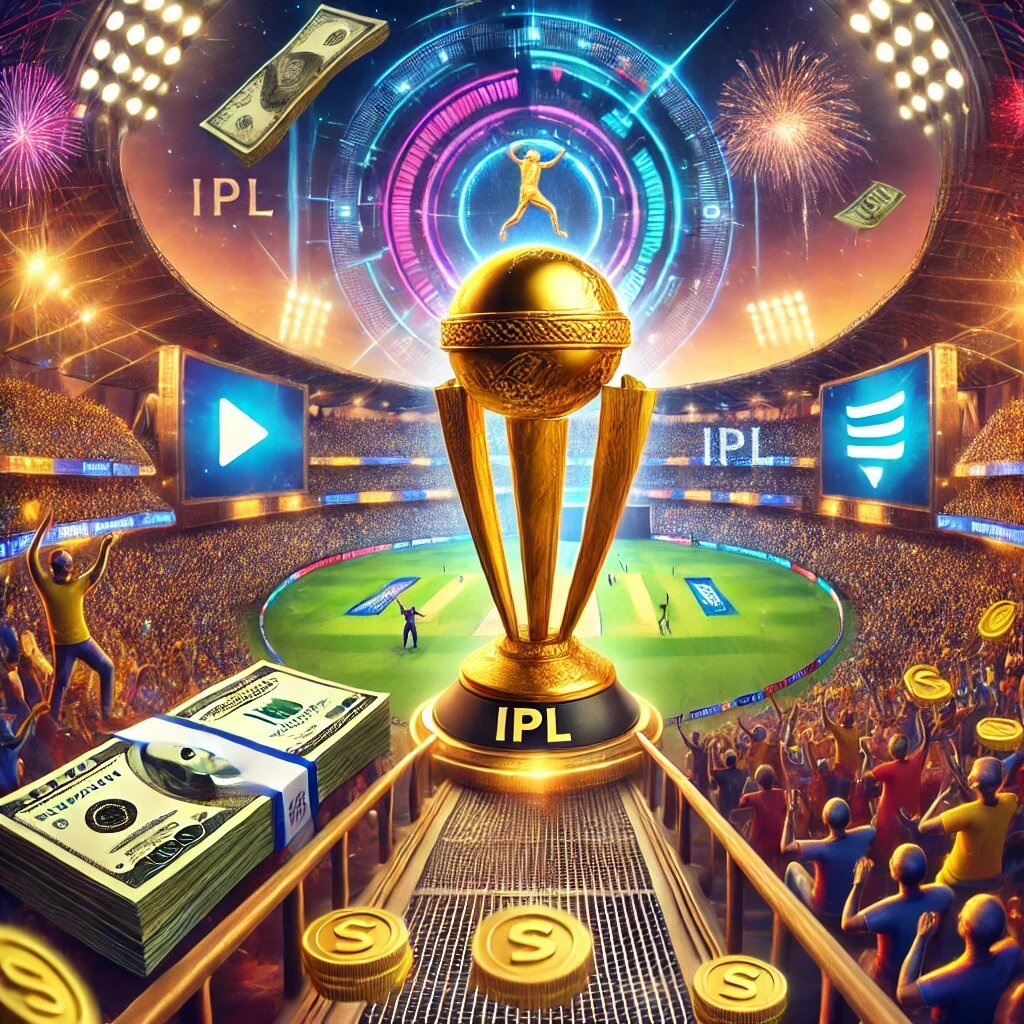Introduction
The Indian Premier League (IPL 2025) is not just a cricket tournament; it’s a global phenomenon that has redefined the business of sports. Since its inception in 2008, the IPL has grown into the wealthiest cricket league in the world, generating billions of dollars every season. But how does the IPL make so much money? Let’s break down the league’s multifaceted revenue streams and explore the strategies that have made it a commercial powerhouse.
Interestingly, the IPL’s success can be compared to other entertainment industries, such as the ever-evolving debate between Bollywood and South Indian cinema in terms of revenue and audience engagement. 🎥 Read more about this cinematic battle Click here.
1. Broadcasting Rights: The Crown Jewel of IPL 2025 Revenue
The IPL 2025 biggest revenue source is its broadcasting rights. In the 2023-2027 cycle, the media rights were sold for a staggering ₹48,390 crore (approximately $6.2 billion). This means each IPL match is valued at over ₹118 crore, making it one of the most expensive sports properties globally.
Disney Star secured the television rights for ₹23,575 crore, while Viacom18 bagged the digital rights for ₹23,758 crore. This split between TV and digital platforms reflects the changing consumption habits of viewers, with a growing preference for streaming services. The massive investment by broadcasters underscores the IPL’s unparalleled popularity and its ability to attract millions of viewers across the globe.
Source: The Economic Times
2. Central Sponsorships: Big Brands, Bigger Deals
The Board of Control for Cricket in India (BCCI) earns significant IPL Revenue through central sponsorship deals. For instance, Tata Sons secured the IPL title sponsorship for ₹2,500 crore over five years. This deal alone highlights the league’s commercial appeal.
In addition to the title sponsor, the Indian Premier League has associate sponsors like MyCircle11, RuPay, AngelOne, and Ceat, which collectively contributed ₹1,485 crore in IPL 2025. These partnerships not only provide financial support but also enhance the league’s brand value by associating it with reputable companies. Because of those BCCI creating a new Cricket Business for India.
Source: The Economic Times, BCCI TV
—
3. Team Sponsorships: A Goldmine for Franchises
Individual franchises also generate substantial IPL Revenue through their own sponsorship deals. Teams like Mumbai Indians, Chennai Super Kings, and Royal Challengers Bangalore, which boast massive fan bases, attract lucrative partnerships. Jersey branding, official partnerships, and team-specific IPL sponsorships contribute approximately 20-30% of a franchise’s total IPL Revenue & Cricket Business.
For example, Mumbai Indians’ partnership with brands like Samsung and Dream11 has been highly profitable. These deals not only bring in money but also strengthen the team’s brand identity.
Source: Campaign India
5. Ticket Sales: Packed Stadiums, Full Coffers
Ticket sales are another significant revenue stream for IPL franchises. Each team hosts seven home matches per season, and ticket prices range from ₹3000 to ₹30,000, depending on the stadium and seating category. A portion of this revenue is shared with state cricket associations, but the majority goes to the franchises.
The electrifying atmosphere of IPL matches ensures that stadiums are often sold out, especially for high-profile games. This not only boosts revenue but also enhances the fan experience, creating a loyal audience base.
Source: The Times Of India
—
6. Merchandise Sales: Fans Love to Show Their Support
Merchandise sales have become a growing revenue source for IPL teams. From jerseys and caps to accessories, fans love to buy official team merchandise to show their support. High-profile players like Virat Kohli, MS Dhoni, and Rohit Sharma significantly boost merchandise sales, as fans want to wear the same gear as their favorite stars.
Teams have also expanded their reach by selling merchandise online, making it easier for fans across the globe to purchase their products. This global appeal has further increased revenue from this segment.
Source: The Economic Times
7. Prize Money: Rewarding Excellence
The IPL offers substantial prize money to teams based on their performance. The winning team receives a significant share, while other top-performing teams also earn rewards. This not only incentivizes competitiveness but also adds to the teams’ revenue streams. Winner Rs 20Cr, Runner-Up Rs13Cr, Third Place Rs.7Cr, Forth Place Rs.6.5Cr. Top Runs Scorer (Orange Cap) Rs. 15 Lakhs, Top Wicket Taker (Purple Cap) Rs. 15 Lakhs, Emerging Player Rs.20 Lakhs, Most Valuable Player Rs.12 Lakhs.
Source: Times Of India
8. Digital Platforms and Advertising: The Future of Revenue Generation
With the rise of digital viewership, platforms like JioHotstar have become key players in IPL’s revenue model. In 2025, JioHotstar aims to secure ad revenues of ₹4500 crore, highlighting the growing importance of digital advertising.
The shift from traditional TV to digital platforms has allowed advertisers to reach a younger, tech-savvy audience. This trend is expected to grow, with more brands investing in digital ads during IPL matches.
Source: The Times Of India
9. Innovative Advertising Strategies: Neuroscience Meets Marketing
Companies like Reliance are taking IPL advertising to the next level by using neuroscience studies, such as brain mapping, to measure viewer engagement. These studies have shown that streaming ads on digital platforms generate higher engagement rates compared to traditional TV ads.
This innovative approach not only attracts more advertisers but also ensures that their messages resonate with viewers, creating a win-win situation for both brands and the IPL.
Source: The Economic Times
10. Global Expansion and New Formats: Inspiring the World
The IPL’s success has inspired other cricket boards to explore similar franchise-based leagues. Leagues like the Caribbean Premier League (CPL) and the Big Bash League (BBL) have adopted the IPL’s financial model, aiming to replicate its commercial success.
The IPL has also experimented with new formats, such as the Women’s Premier League (WPL), which has further expanded its reach and revenue potential.
Source: Cric Tracker
Final Takeaways: Why the IPL is a Commercial Giant
- The IPL’s diversified revenue model, including broadcasting rights, sponsorships, ticket sales, and merchandise, has made it the world’s richest cricket league.
- Strategic partnerships with global brands and innovative advertising techniques have enhanced its revenue streams.
- The league’s success serves as a blueprint for other sports organizations aiming for commercial success.
- The integration of digital platforms and advanced advertising strategies highlights the evolving nature of sports revenue generation.
The IPL’s comprehensive revenue strategies have not only solidified its status as a global sports powerhouse but also set new standards in sports commercialization.

